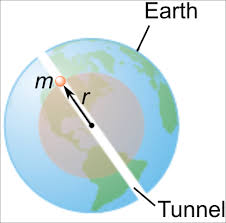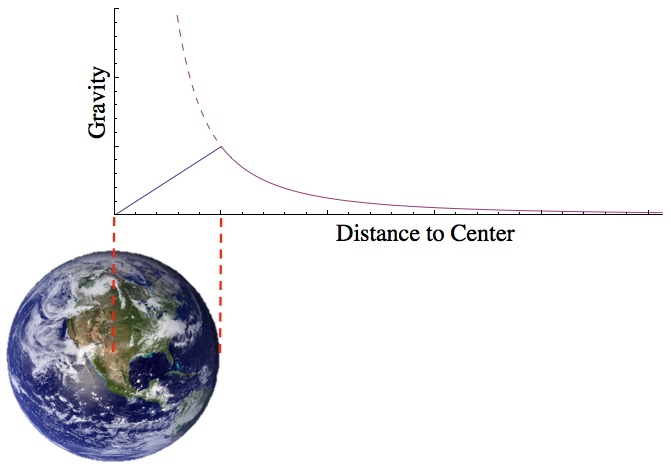Gravity Inside a Planet
1. Gravitational Force on the Surface of a Planet
We begin with Newton’s Law of Universal Gravitation:
This tells us the force between two masses: the planet (mass \( M \)) and an astronaut (mass \( m \)), separated by distance \( R \) from the planet’s center.
Step 1: Expressing the planet's mass using density
If we assume the planet has a uniform density \( \rho \), then the planet’s mass is:
Step 2: Substituting into the force formula
Plug that into Newton's Law:
Simplifying:
Final Surface Gravity Equation:
This is powerful: it means you can find the gravitational force **without knowing the total mass**—just the density and radius.
2. Gravity Below the Surface: Shell Theorem
Once underground, something surprising happens: only the mass below the astronaut contributes to gravity. The outer layers cancel out.
This is called the Shell Theorem.

Where \( R' \) is the distance from the planet’s center, and \( M' \) is the mass of the inner sphere of radius \( R' \).
Step 1: Find the inner mass \( M' \)
Step 2: Sub into Newton’s Law
Key Insight:
Gravity decreases linearly as you move toward the center:

3. Gravitational Acceleration
Since \( F = m g \), we divide by mass \( m \) to get acceleration:
On the surface:
Inside the planet:
4. Full Example Calculation
- Mass of astronaut: 150 kg
- Radius of planet: \( 3 \times 10^6 \, \text{m} \)
- Density: \( 7 \, \text{g/cm}^3 = 7000 \, \text{kg/m}^3 \)
Find surface gravity:
So the force on the astronaut is:
5. What Happens If the Astronaut Falls Through a Tunnel?
If the astronaut jumps into a tunnel through the center of the planet, gravity acts like a spring:
This means the astronaut oscillates back and forth through the planet in a straight line! We will get more into oscillations later in this unit
Oscillation Through a Planet Tunnel
Gravity on the surface depends on planet radius and density. Inside a planet, gravity drops linearly with depth. The formula \( F = \frac{4}{3} \pi G \rho R m \) is powerful and arises directly from combining Newton's Law and the geometry of spheres.